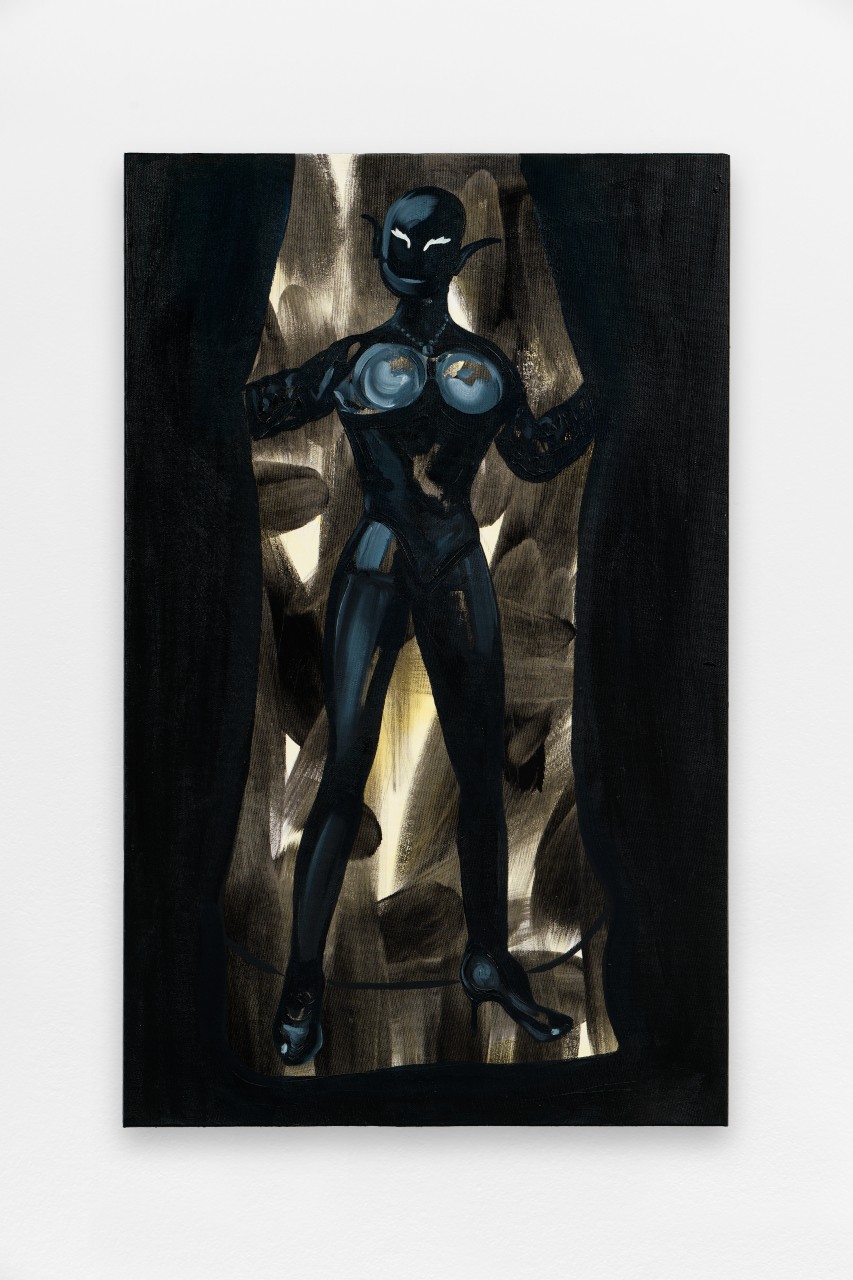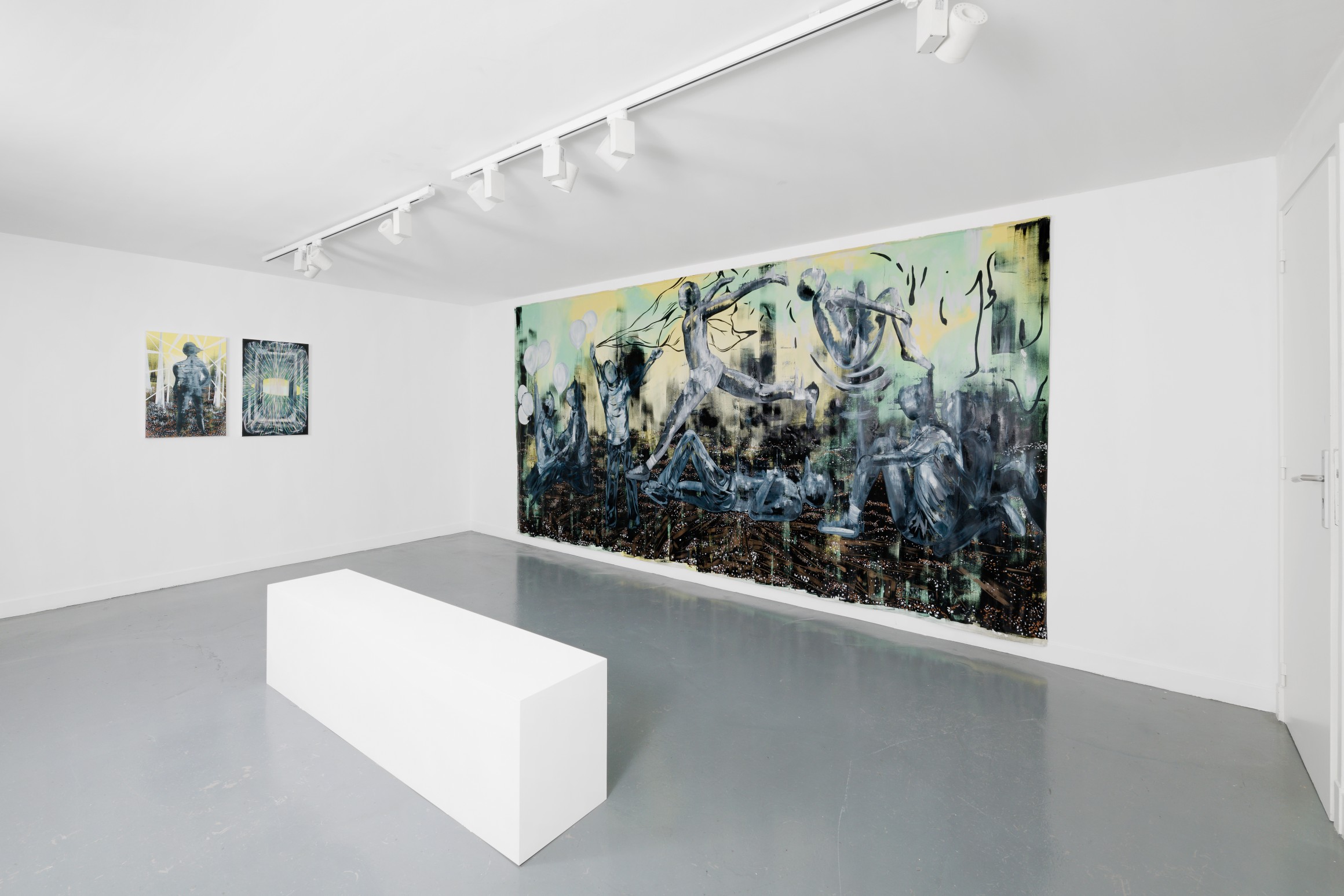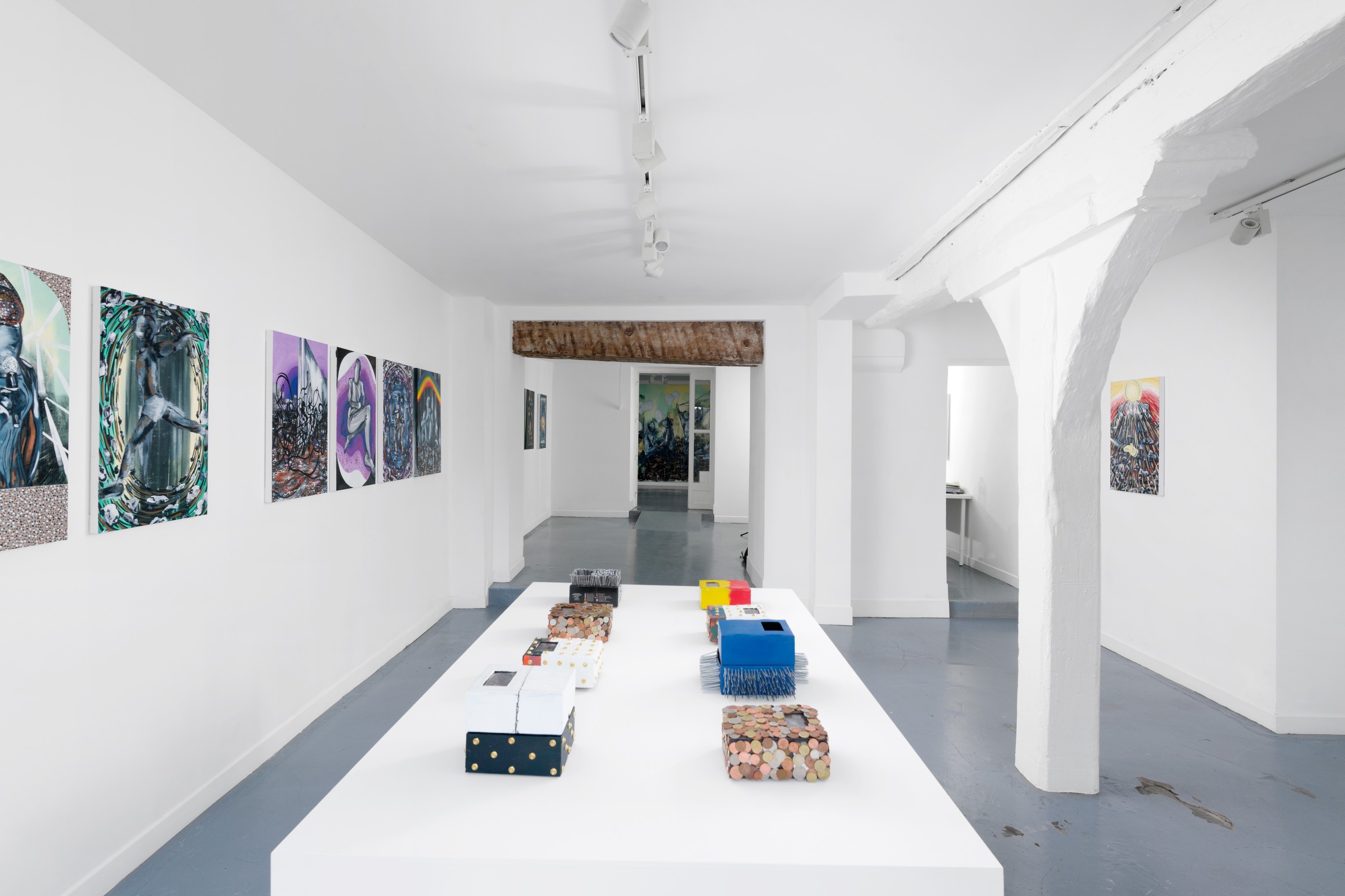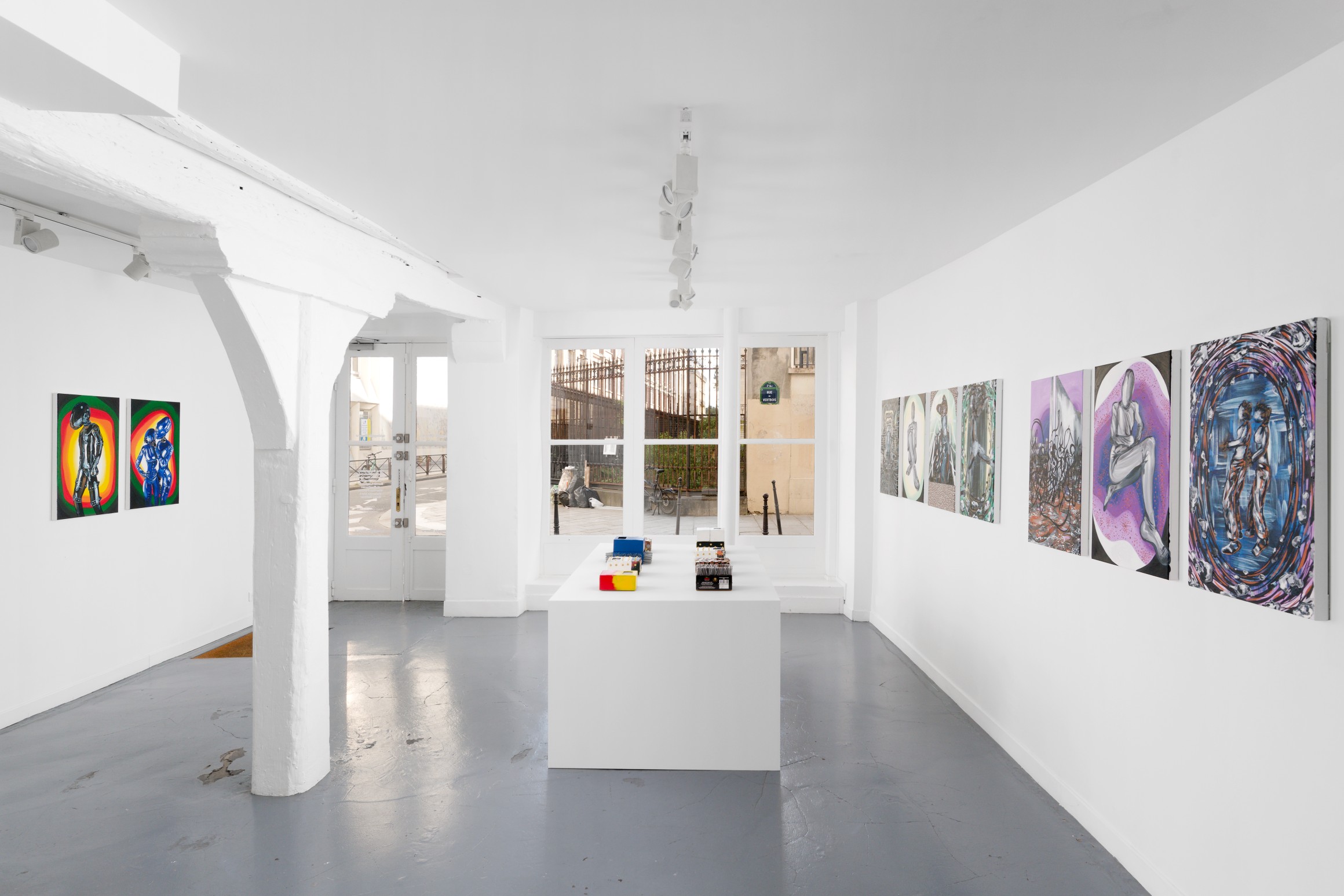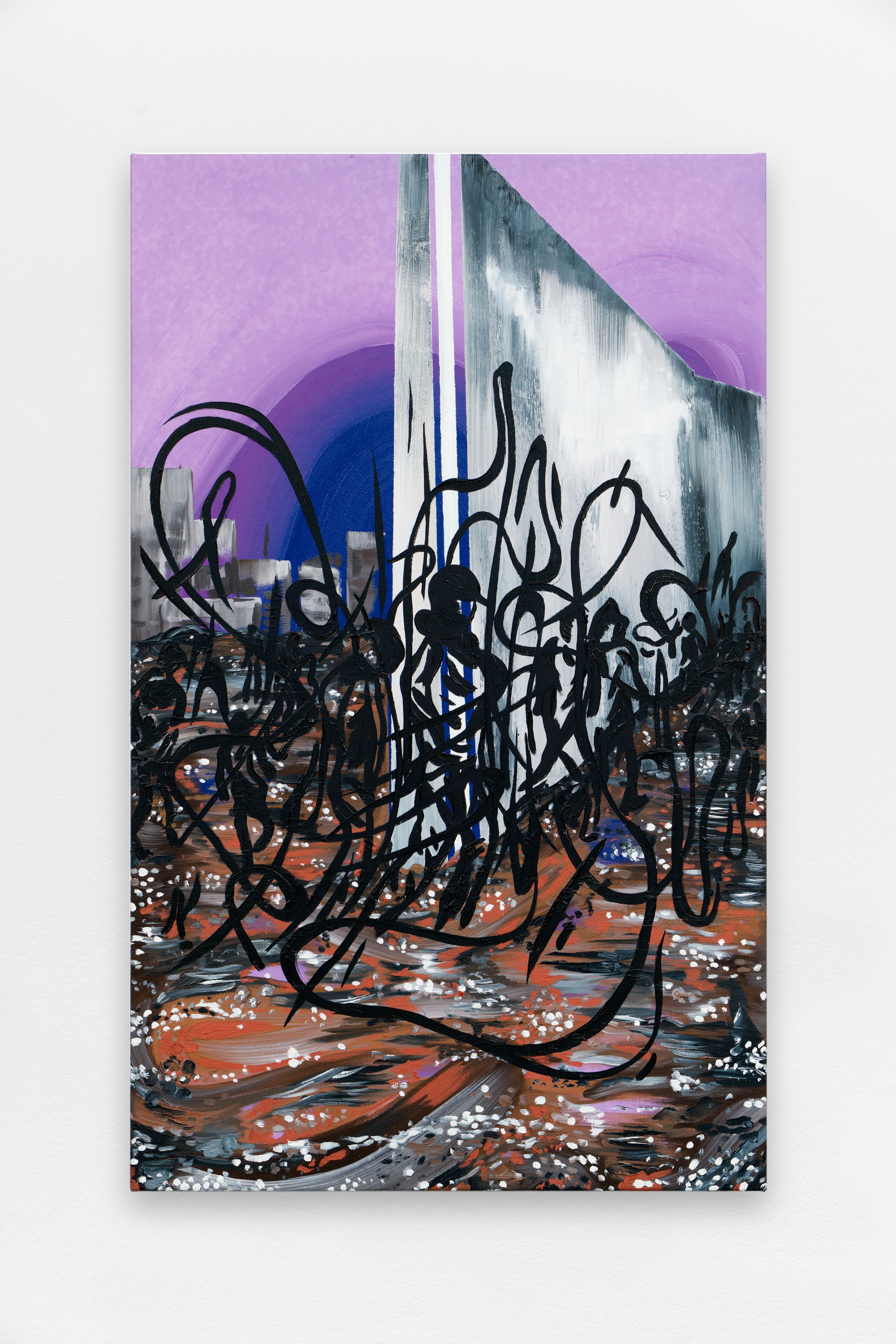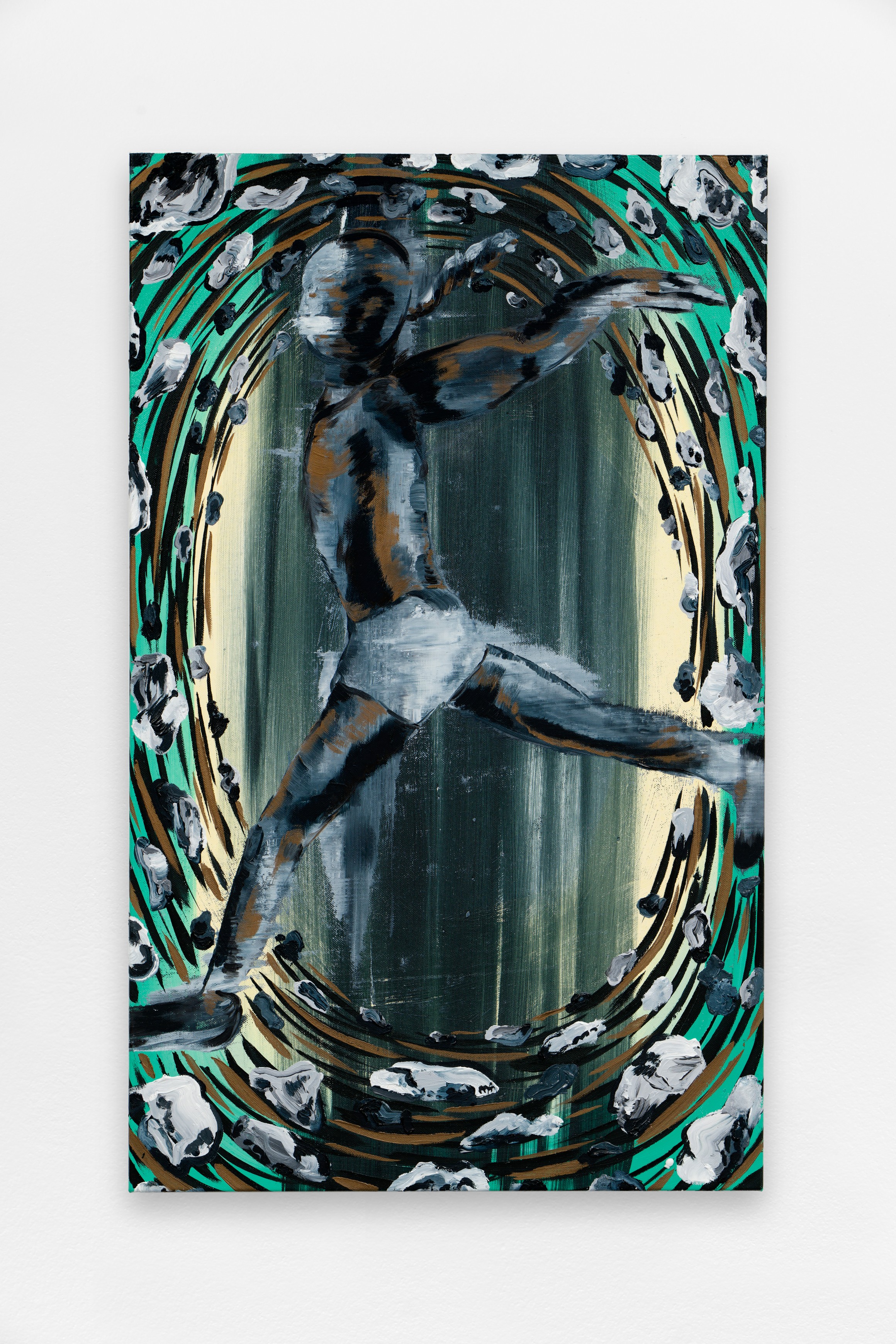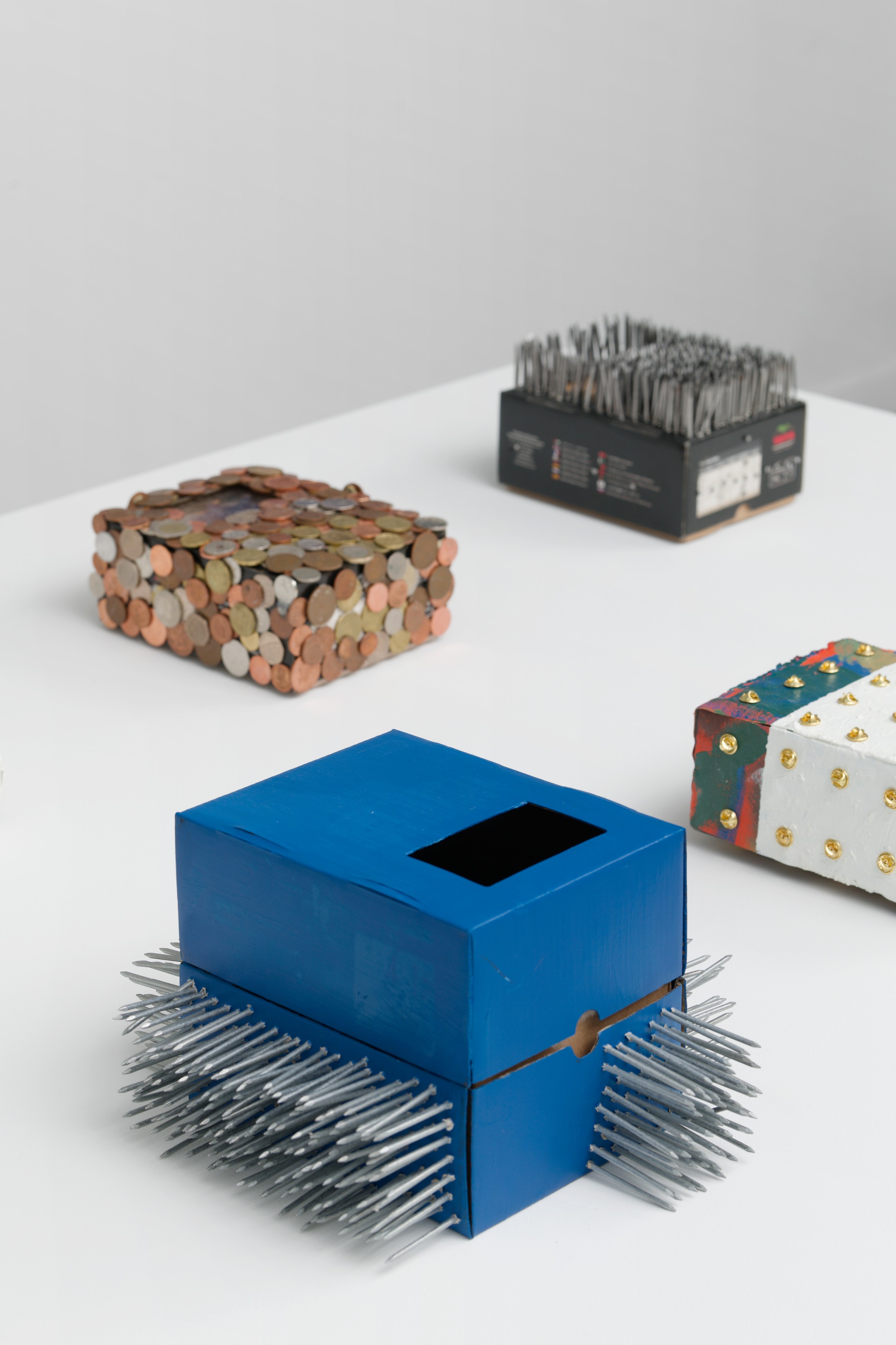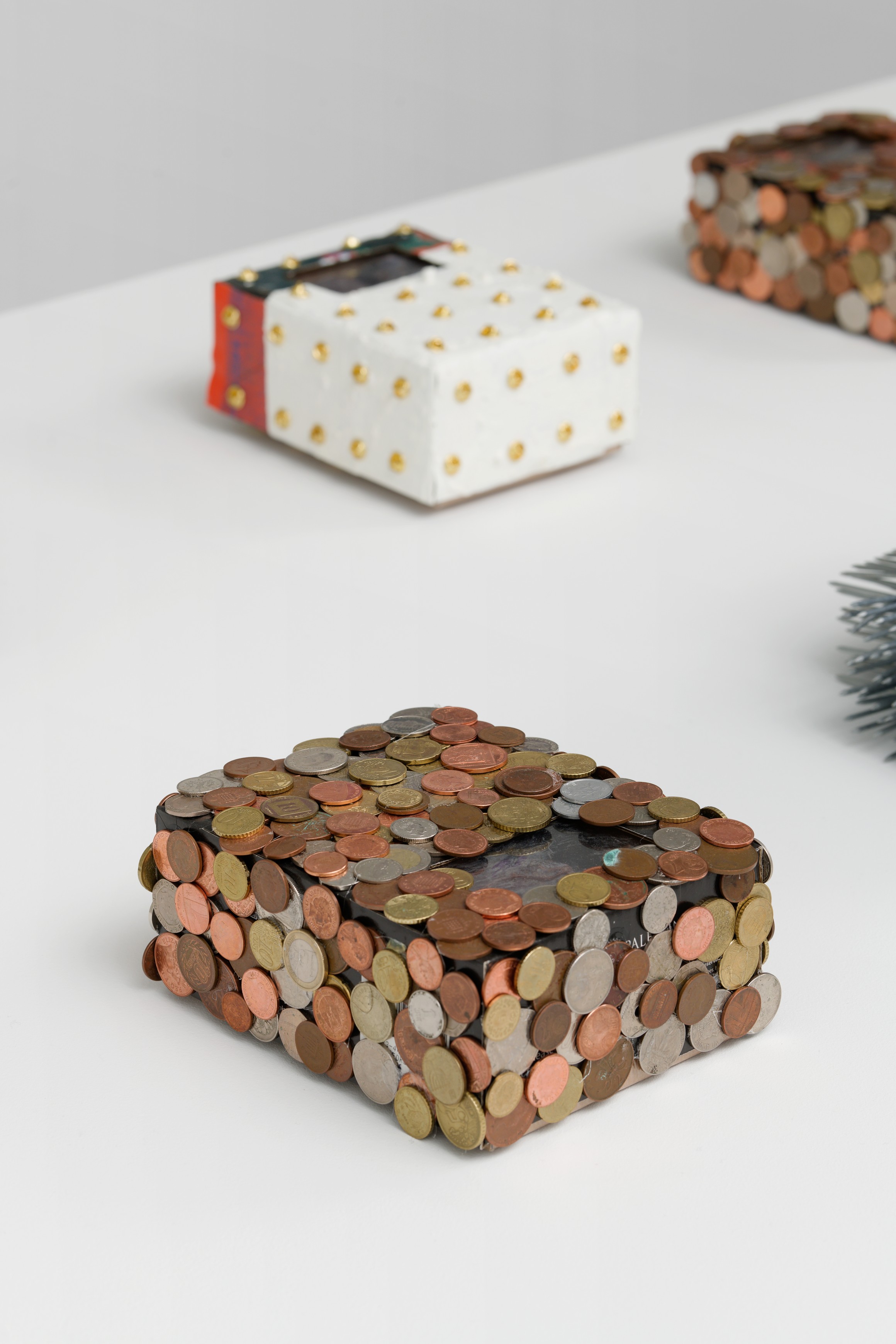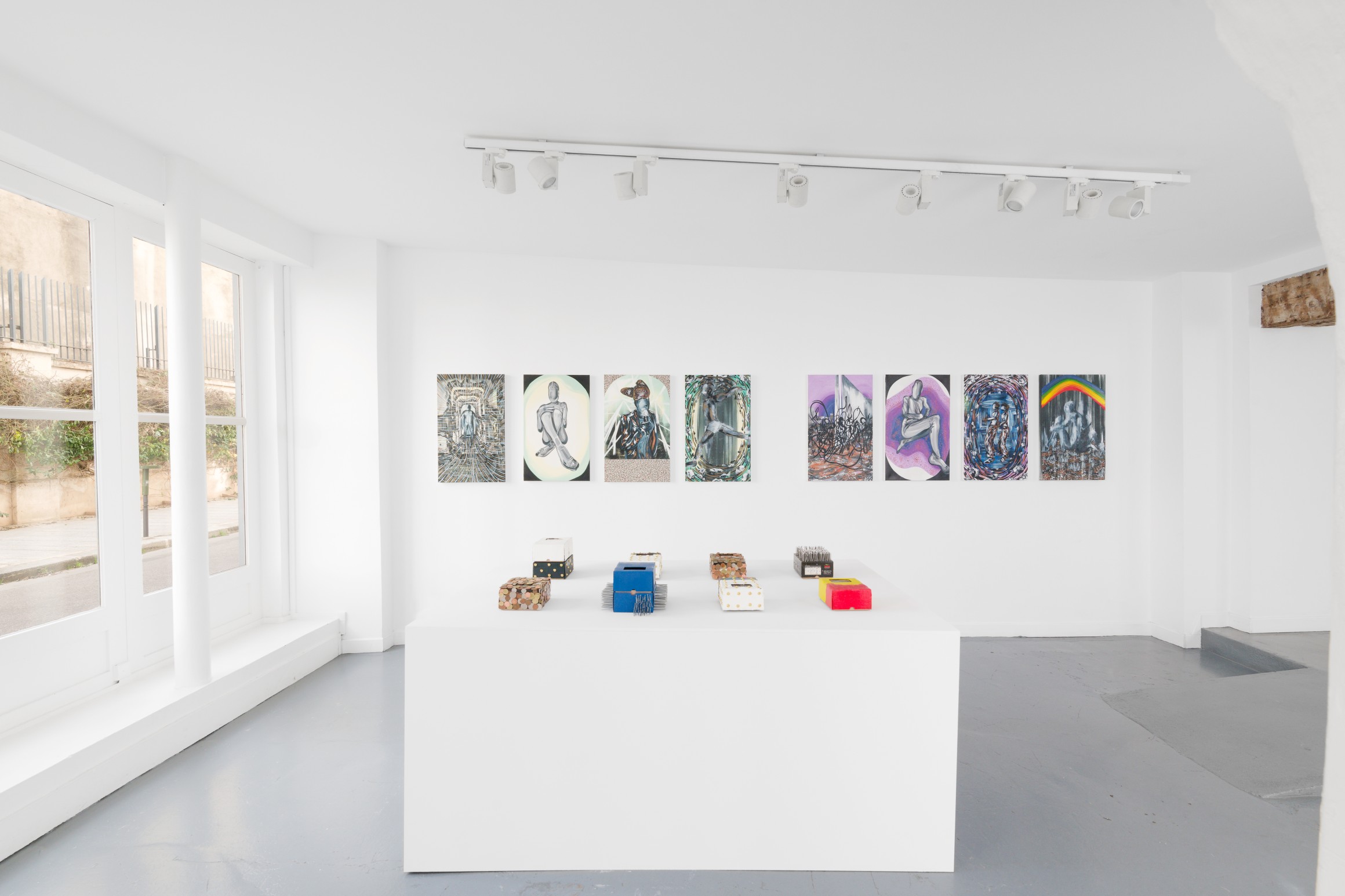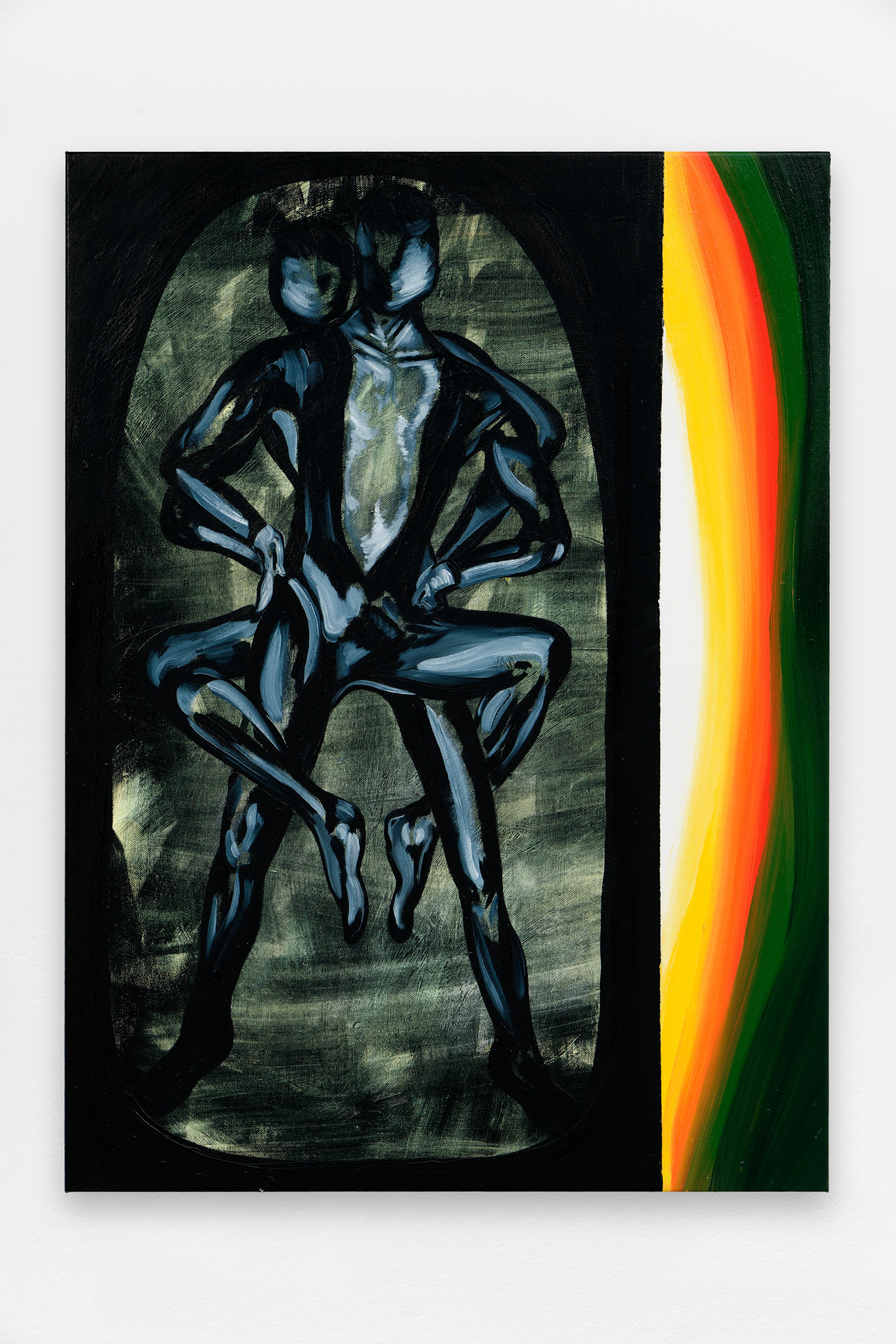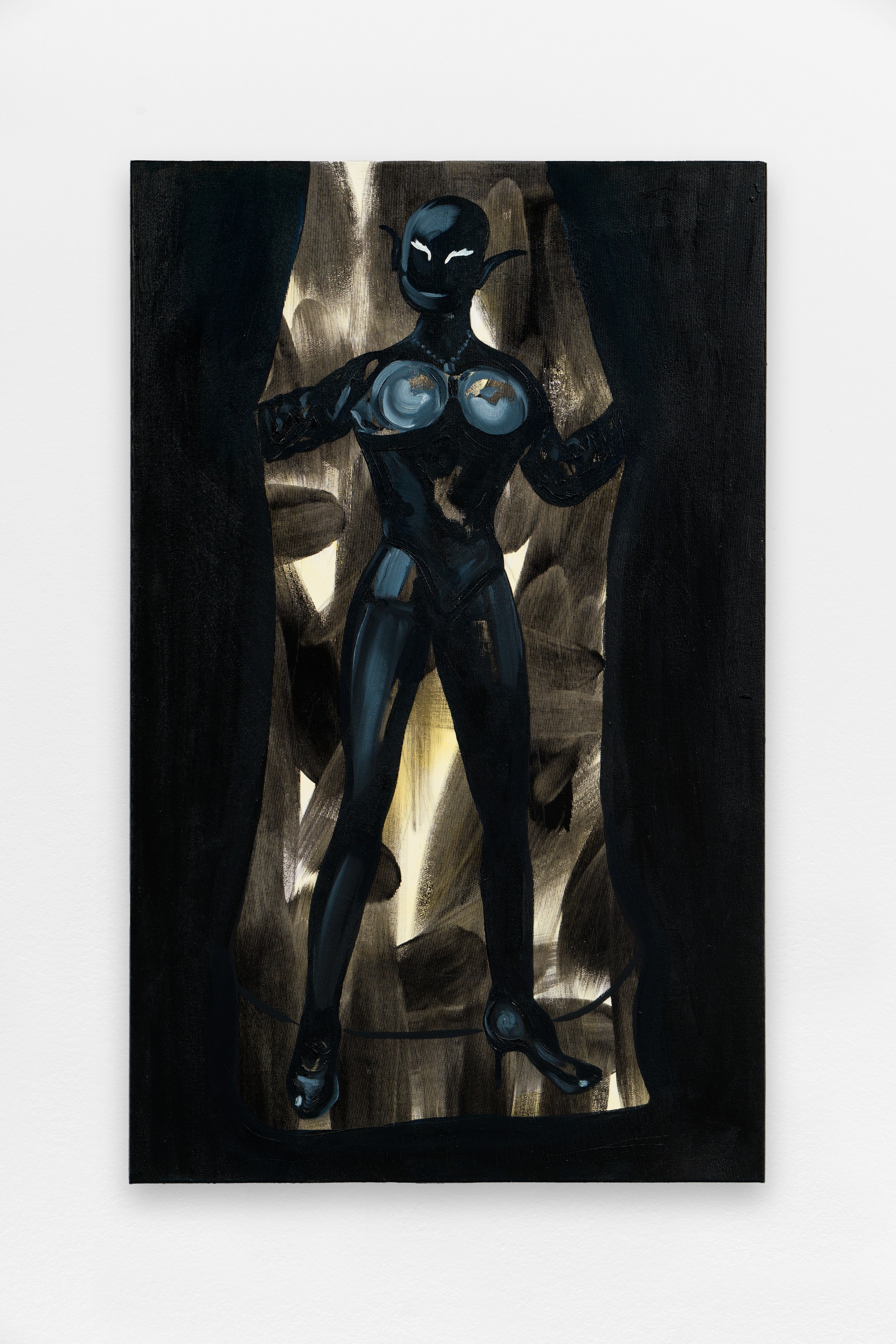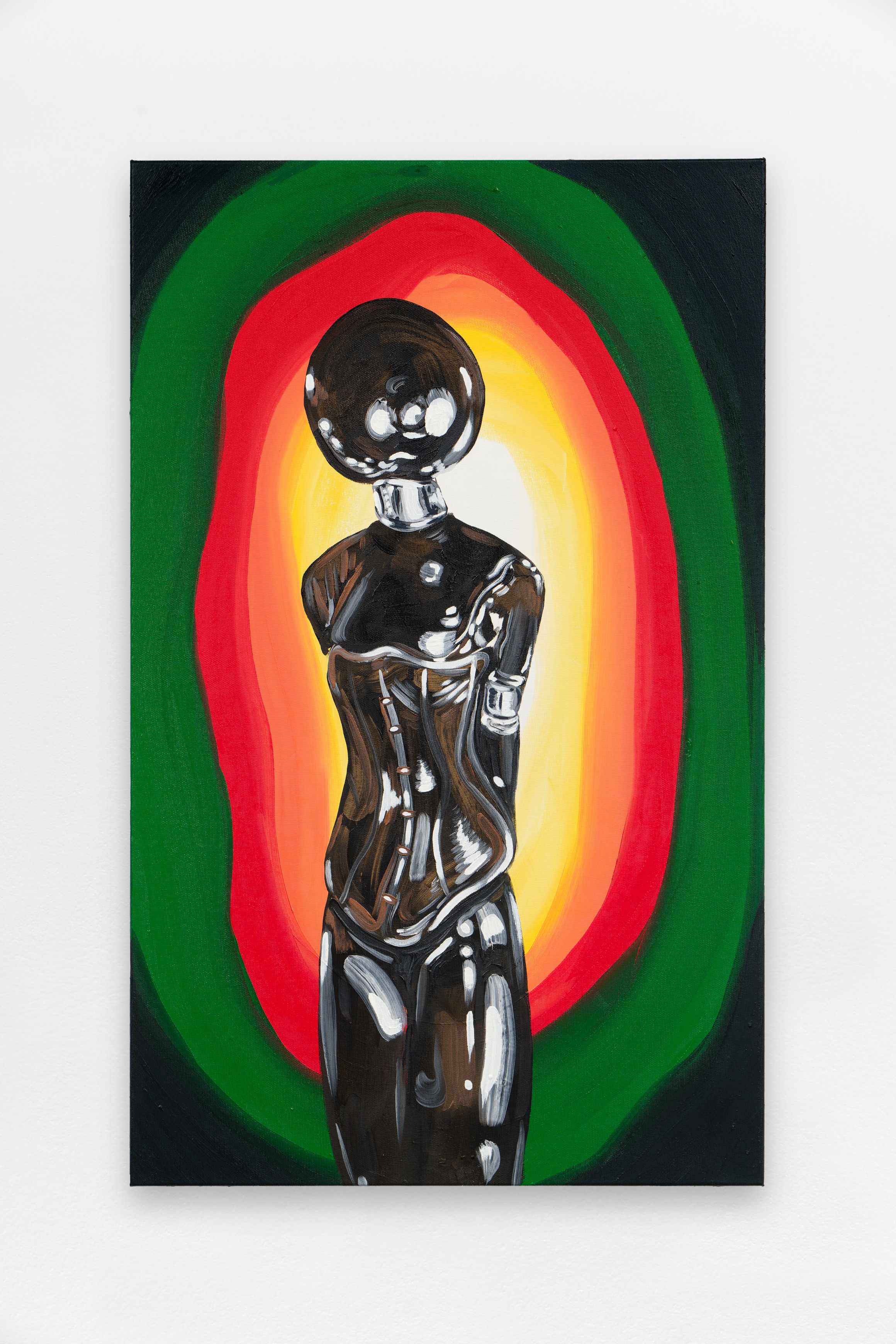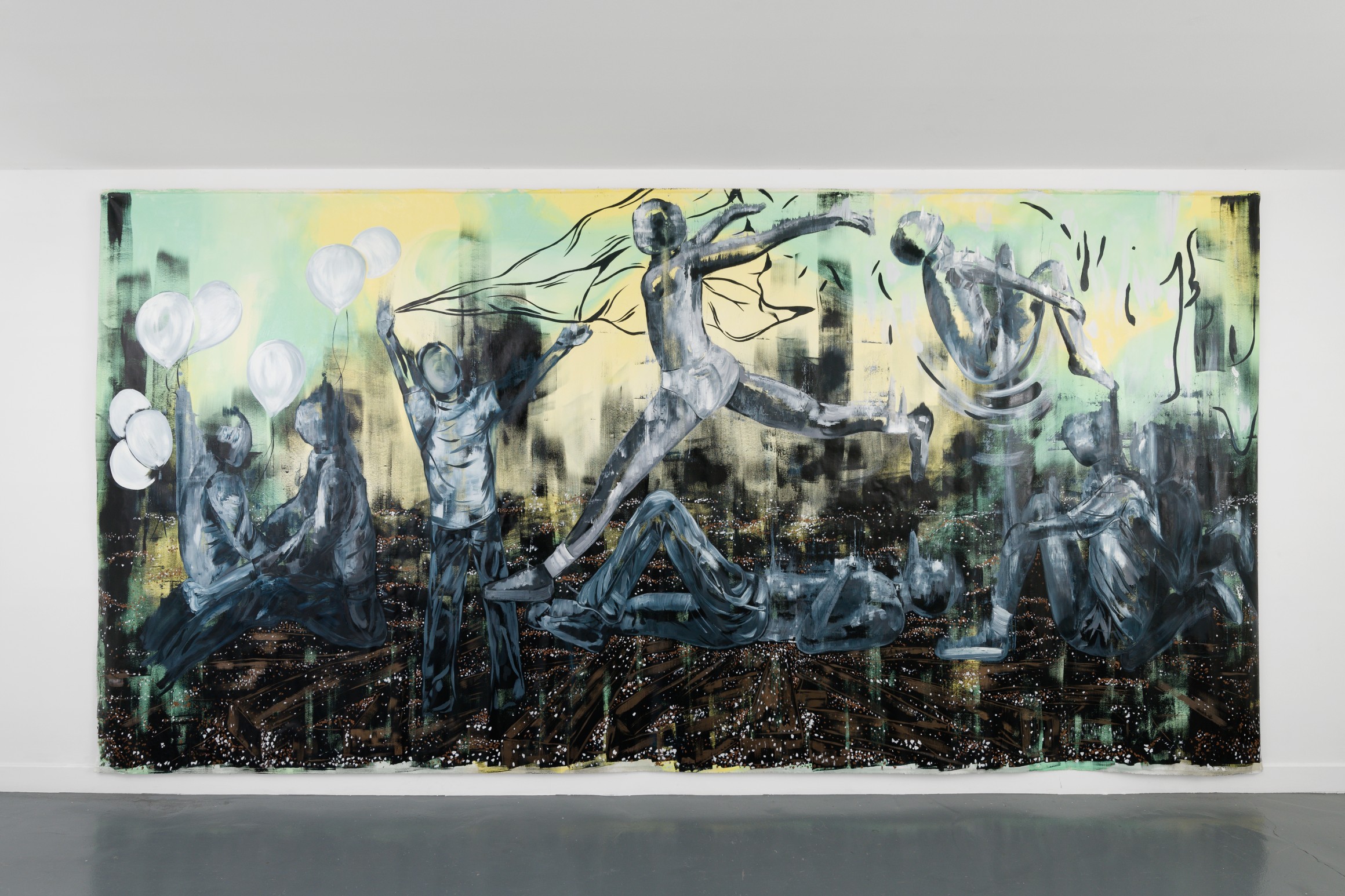- Gaby Sahhar
When language fails, bodies talk
French and British artist of Palestinian origin, Gaby Sahhar explores themes related to the notion of borders, political geographies, gender identities, and sexuality in their paintings, sculptures, and installations. Drawing on speculative fiction, science fiction, and reflections on transit sites in Western metropolises, they weave narratives aimed at deconstructing the power dynamics imposed on marginalized communities, particularly queer ones, by focusing on intersectionality and the potential encounters between different activist practices.
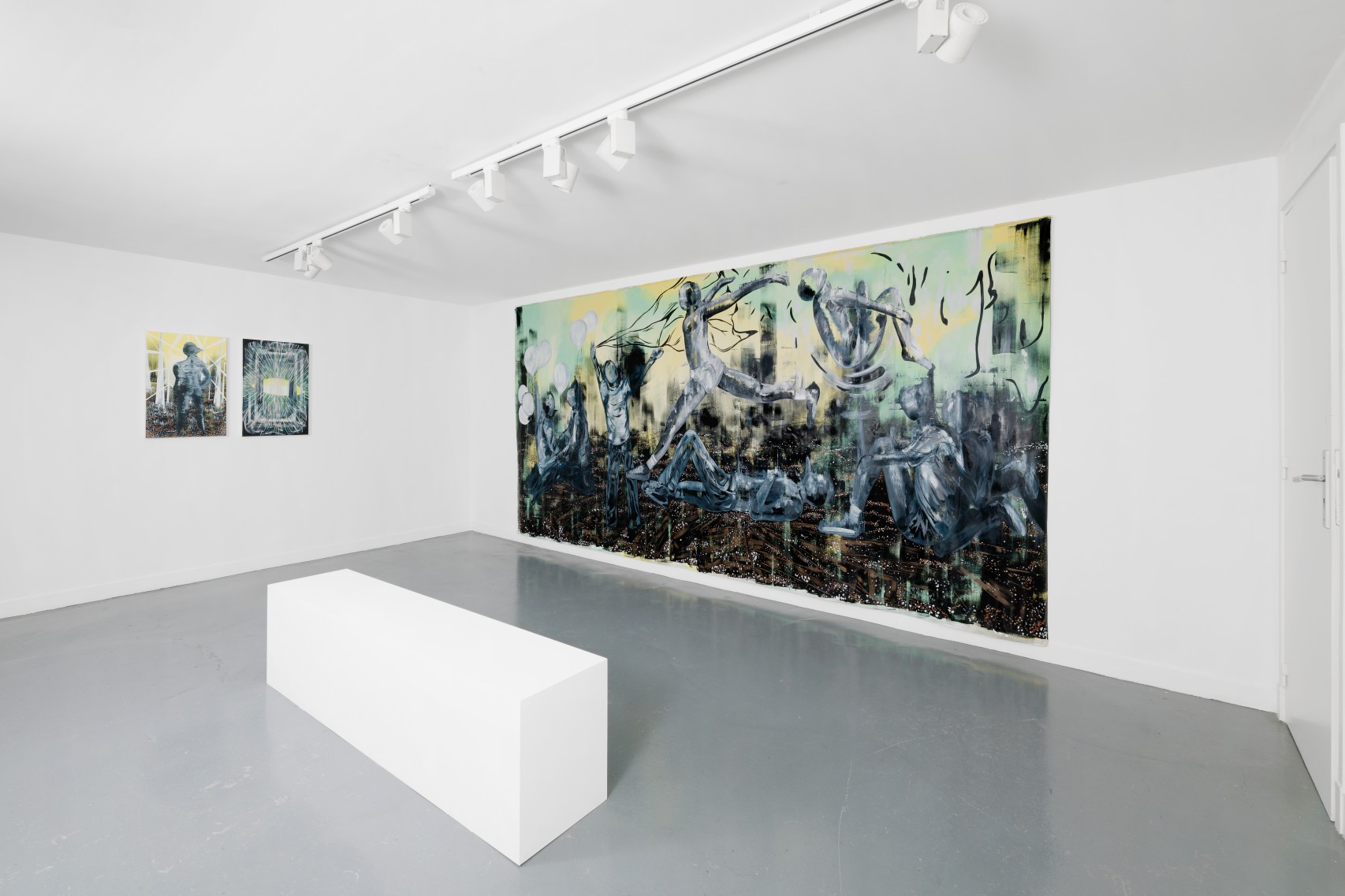
Vue d’exposition, « When language fails, bodies talk », spiaggia libera, Paris, France, 2024. Photo © Aurélien Mole
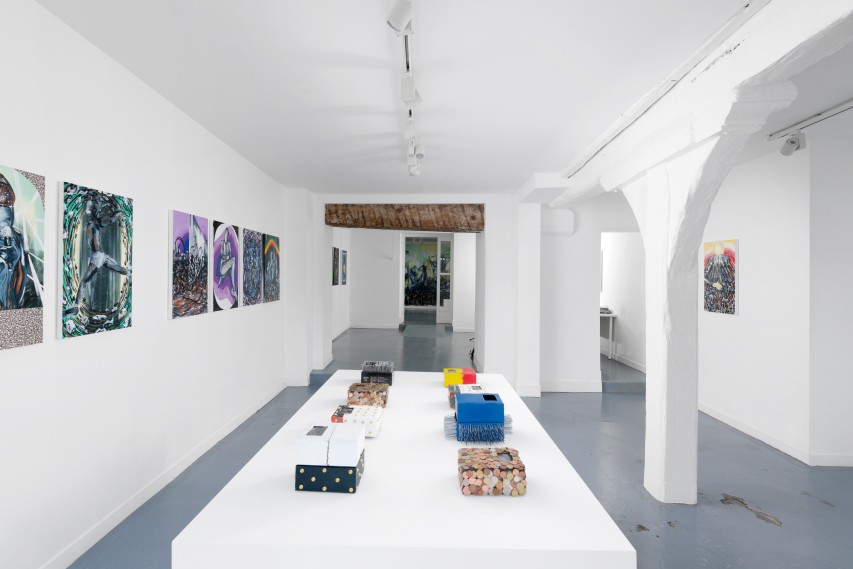
Vue d’exposition, « When language fails, bodies talk », spiaggia libera, Paris, France, 2024. Photo © Aurélien Mole
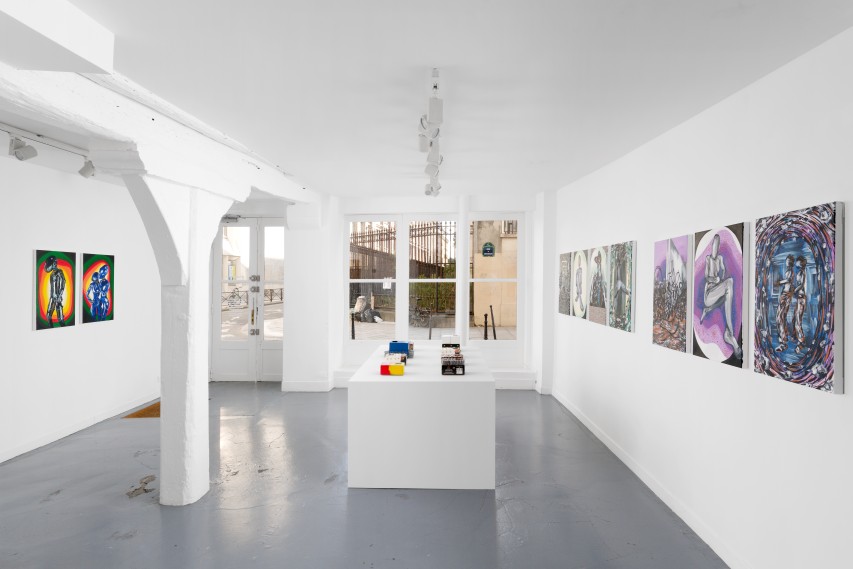
Vue d’exposition, « When language fails, bodies talk », spiaggia libera, Paris, France, 2024. Photo © Aurélien Mole
In his essay What is a Border? (1994), philosopher Etienne Balibar mentions three key aspects of the ambiguity of borders inherited from colonial empires and the concept of the nation-state: their overdetermination, polysemy, and heterogeneity. Theissueofborders,whetherpolitical,colonial,or imaginary, is thus at the heart of Gaby Sahhar’s practice.
The queer body can also be seen as both an intimate and public border — once bodies are liberated, borders will be too. As writer and scholar Paul B. Preciado often expresses, the body is a true “living political archive,” and its stigmas reflect the events and traumas of the time we live in.
Inspired by the architectural politics revealed in the construction of borders — recognizable by their steel structures and metal cubes — Gaby Sahhar evokes in their paintings an environment of fragmented landscapes, a border- like division of walls and gates, perhaps those that have enclosed Palestinian territories since 2002. Gaby Sahhar’s latest series of paintings presents a psychedelic aesthetic with green, red, and black tones, further evoking the colors of the Palestinian, French, and British flags.
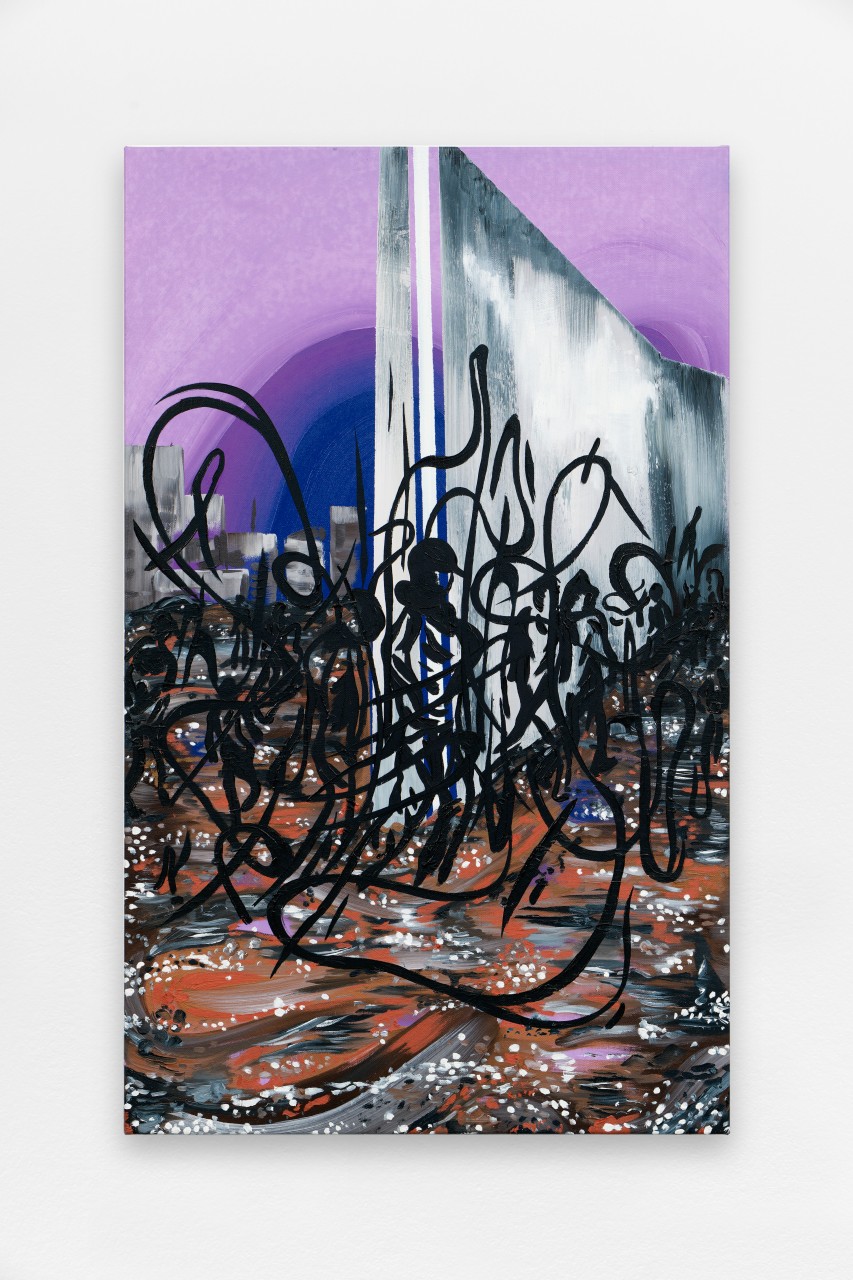
Wall, 2024, Oil on linen, 75 x 45 cm. Courtesy the artist & spiaggia libera, Paris. Photo © Aurélien Mole
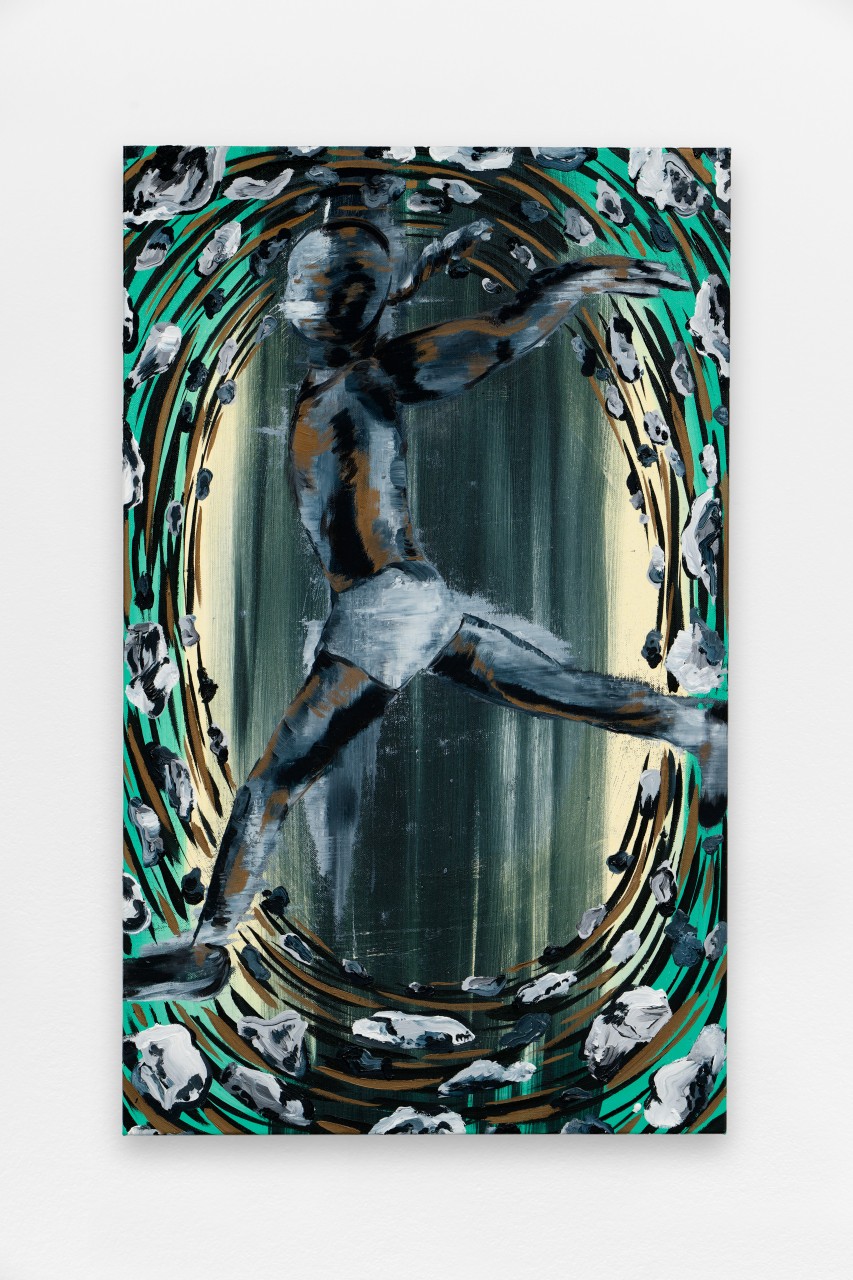
Concrete Jump, 2024, Oil on linen, 75 x 45 cm. Courtesy the artist & spiaggia libera, Paris. Photo © Aurélien Mole
A set of eight sculptures punctuates the exhibition, made from Palestinian Medjool date boxes. All are adorned with elements related to the notion of borders, standing as vernacular remnants of how Palestinian culture has managed to cross borders into Western Europe.
It is precisely the forbidden architectures and blurred peripheries of borders—hostile and violent environments often arranged by colonial powers—that seem to fascinate the artist, whose works reflect in their own way the theories of the Forensic Architecture movement (Border Forensic), a multidisciplinary research group based in London using architectural techniques and technologies to investigate cases of state violence and human rights violations worldwide.
The titles of Gaby Sahhar’s works seem to come straight from a border identity check, questioning the deprivation of our rights in these moments of power and humiliation: Passport Please, Enforcement Shoe, Suspicious Item, etc. It is, moreover, the fantasy of these borders that they have not known and cannot visit that gives their paintings their somewhat unsettling semi-fictional aspect.
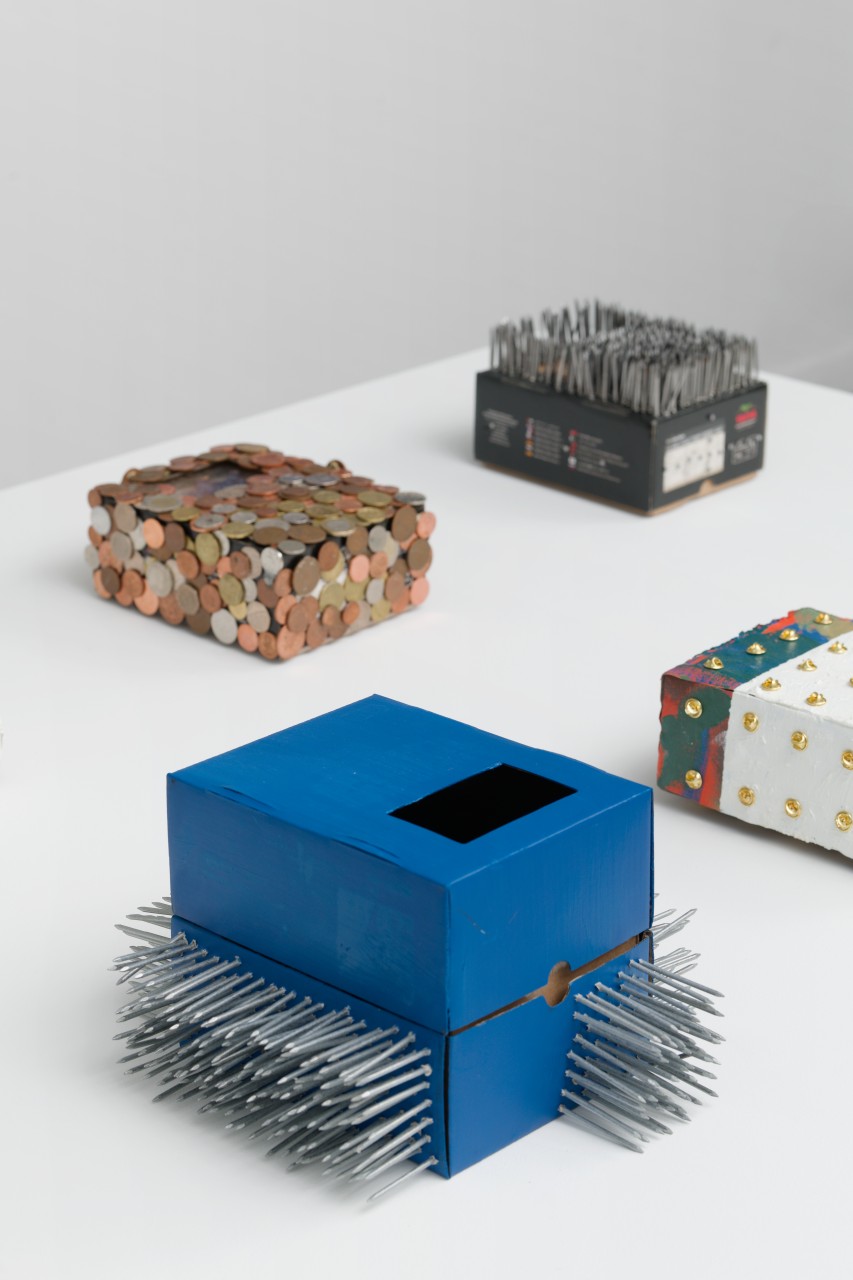
Untitled, 2024, Oil and nails, 19 x 15 x 12 cm. Courtesy the artist & spiaggia libera, Paris. Photo © Aurélien Mole
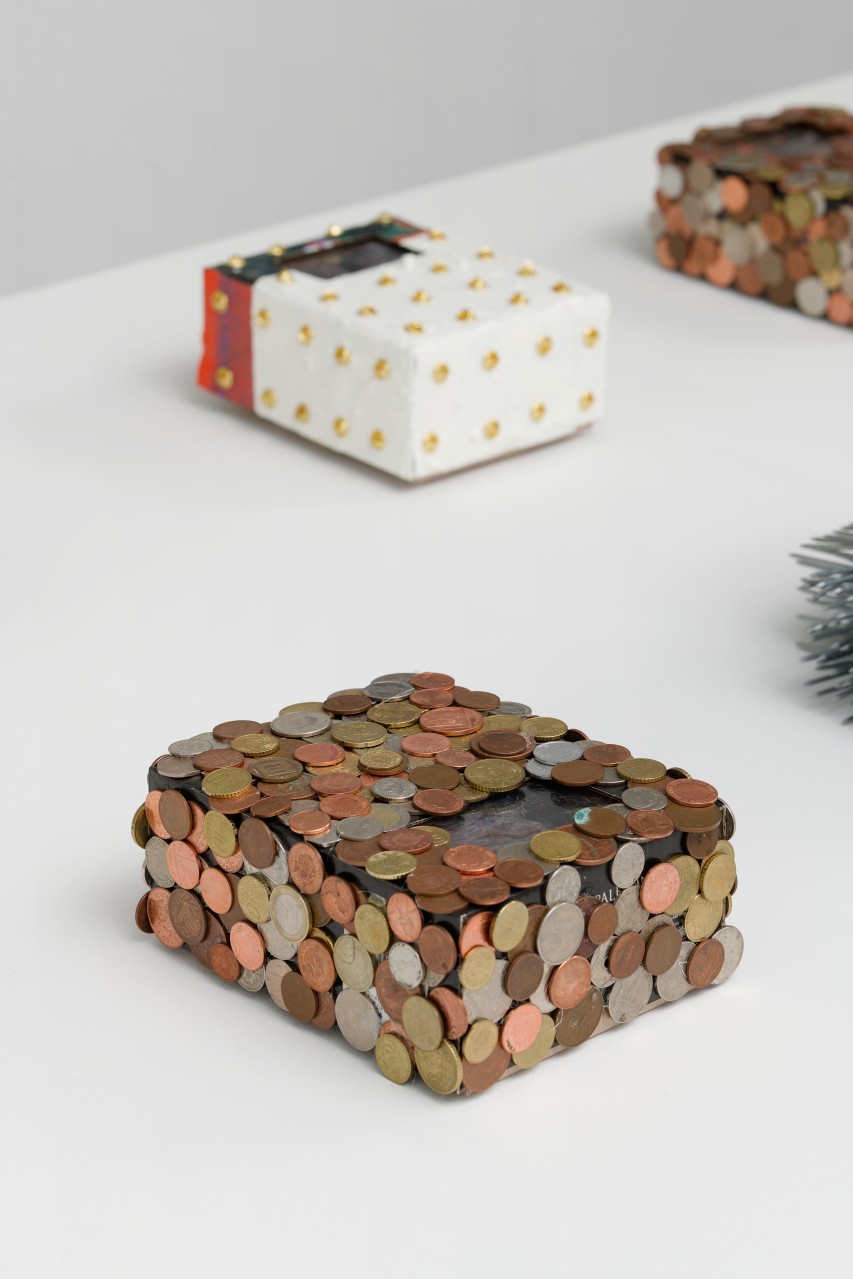
Untitled, 2024, Huile et pièces, 20 x 14 x 10 cm. Courtesy the artist & spiaggia libera, Paris. Photo © Aurélien Mole
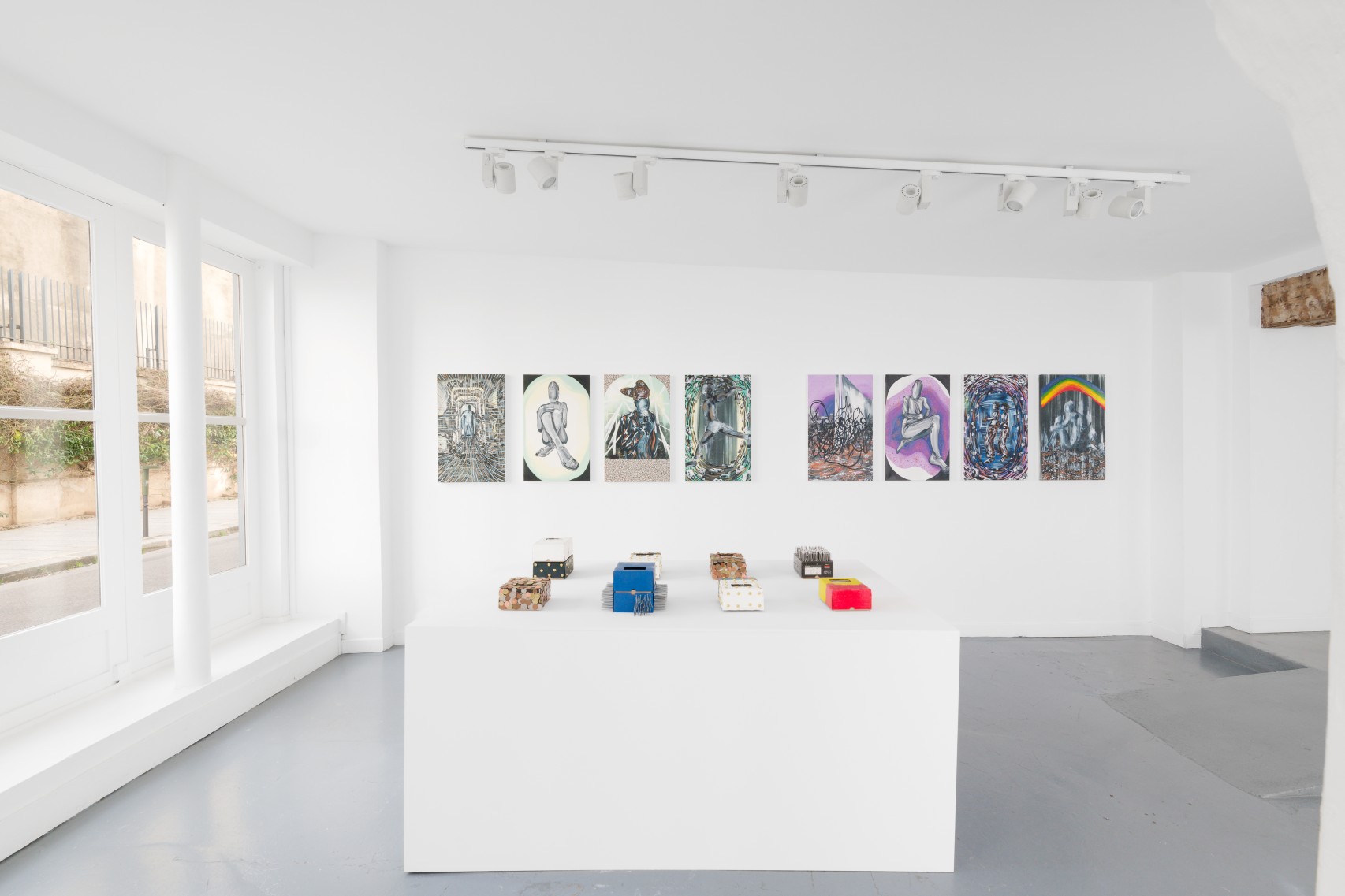
Vue d’exposition, « When language fails, bodies talk », spiaggia libera, Paris, France, 2024. Photo © Aurélien Mole
One of the artist’s tutelary figures is Pierre Molinier, a painter and photographer from the early last century, whose life and work are filled with dark fantasies and sensational anecdotes. His photographs of fetishized bodies remain captivating today.
Although inspired by Surrealism, Molinier remained on the fringes of the movement. His self-portrait technique, to which Gaby Sahhar refers, involved photographing himself crossdressed and made up, then cutting and reassembling the images to create a collage — an idealized vision of himself. Gaby Sahhar’s paintings depict androgynous creatures, part-robotic and part-fetish, with hidden faces, proposing an alternative existence to heterosexual conventions. Not only complex in their technique and subject matter, their figures, like those of Molinier, challenge traditional ideas of power, domination, and gender fluidity.
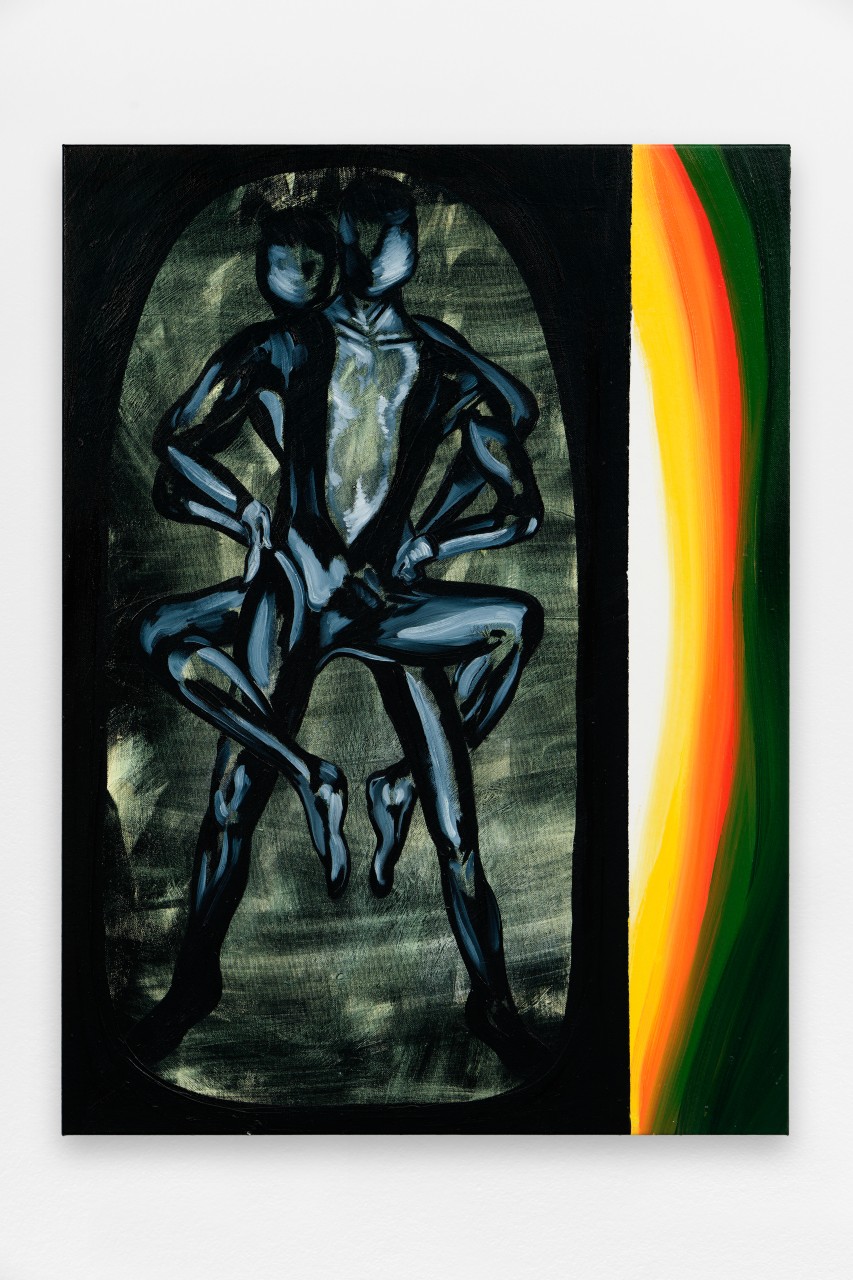
Compressed memories, 2024, Oil on linen, 75 x 55 cm. Courtesy the artist & spiaggia libera, Paris. Photo © Aurélien Mole
Untitled, 2024, Huile sur lin / Oil on linen, 75 x 45 cm. Courtesy the artist & spiaggia libera, Paris. Photo © Aurélien Mole
Icons of a post-gender era and a pioneer of queer culture, Molinier left behind a space for young artists like Gaby Sahhar to imagine new visual and political possibilities. Like other painters to whom the artist echoes, Molinier explores the fragmentation of the human body, shattering its contours to reveal a new vision.
This transgressive and deeply symbolic deconstruction reflects the fragmentation of borders in a world at war, where perhaps only fragmented bodies can still be represented. When language fails, bodies talk.
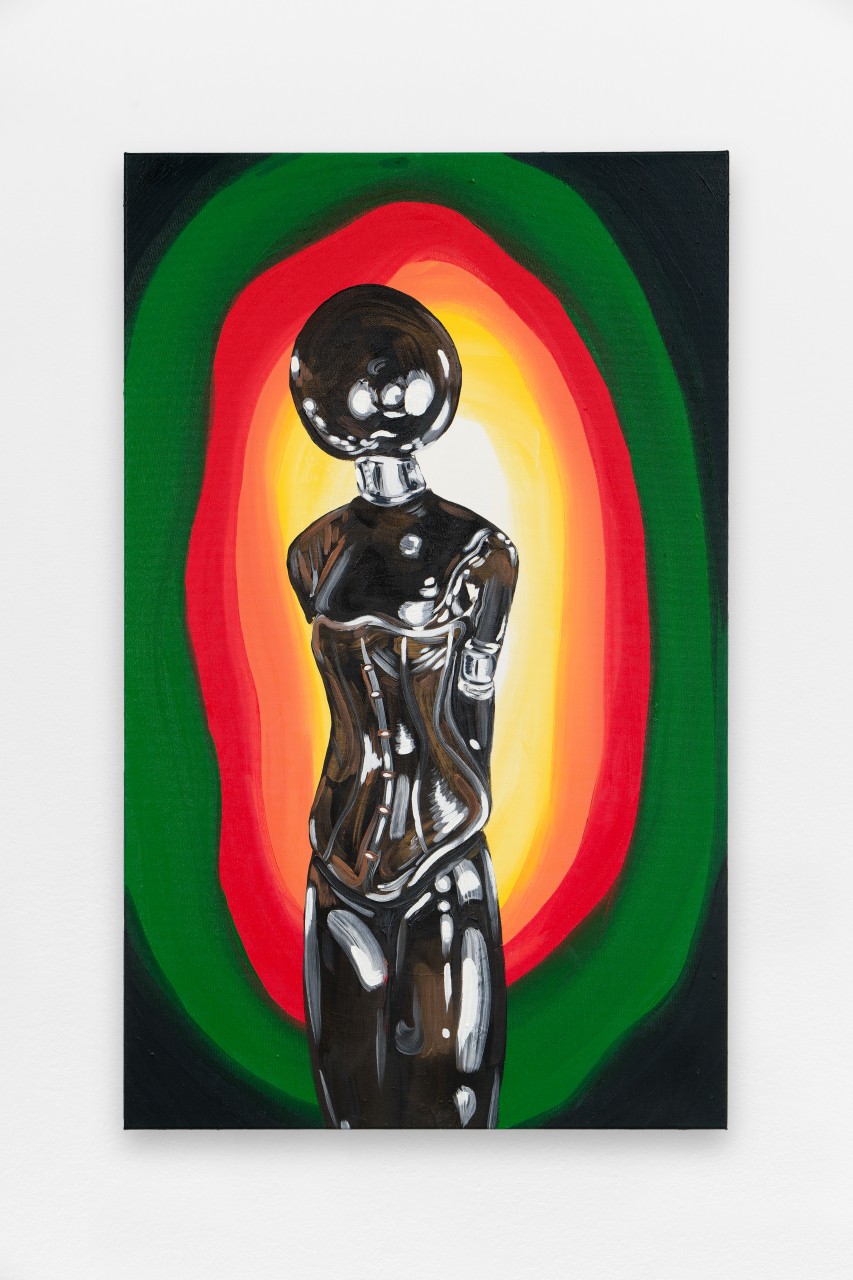
The Impossible, 2024, Oil on linen, 75 x 45 cm. Courtesy the artist & spiaggia libera, Paris.
Lastly, it is the nightlife world that inspires Gaby Sahhar’s deconstructed aesthetic of club culture — sometimes a bit dark and often speckled with flashes of light, halfway between the depths of dark wave and the sparkle of disco. Having spent their teenage years in South London in the 2000s, frequenting many clubs, they convey in their work the idea of the dancefloor as a meeting place and a space of resistance that can break down borders between people.
The same desire for resistance and transgression applies to the central work of the exhibition, Syntax, a vast mural created from the archives of the LGBTQIA+ Center in New York.
This painting revisits iconic photographs from the Pier district of the late 1970s. Each character coexists in a fictional, location-free setting. Presented in the last room of the gallery, this mural is accompanied by a sound installation created in collaboration with Owen Pratt, perhaps the soundtrack of these transitional spaces that Gaby Sahhar conjures in these paintings.
Throughout their practice, the artist extends the metaphor of the club as an ephemeral model of living together and an open space for dreaming of social, sexual, and racial freedom. Perhaps, in fact, the only space where one can forget and be forgotten, and dance the pain away.
Martha Kirszenbaum
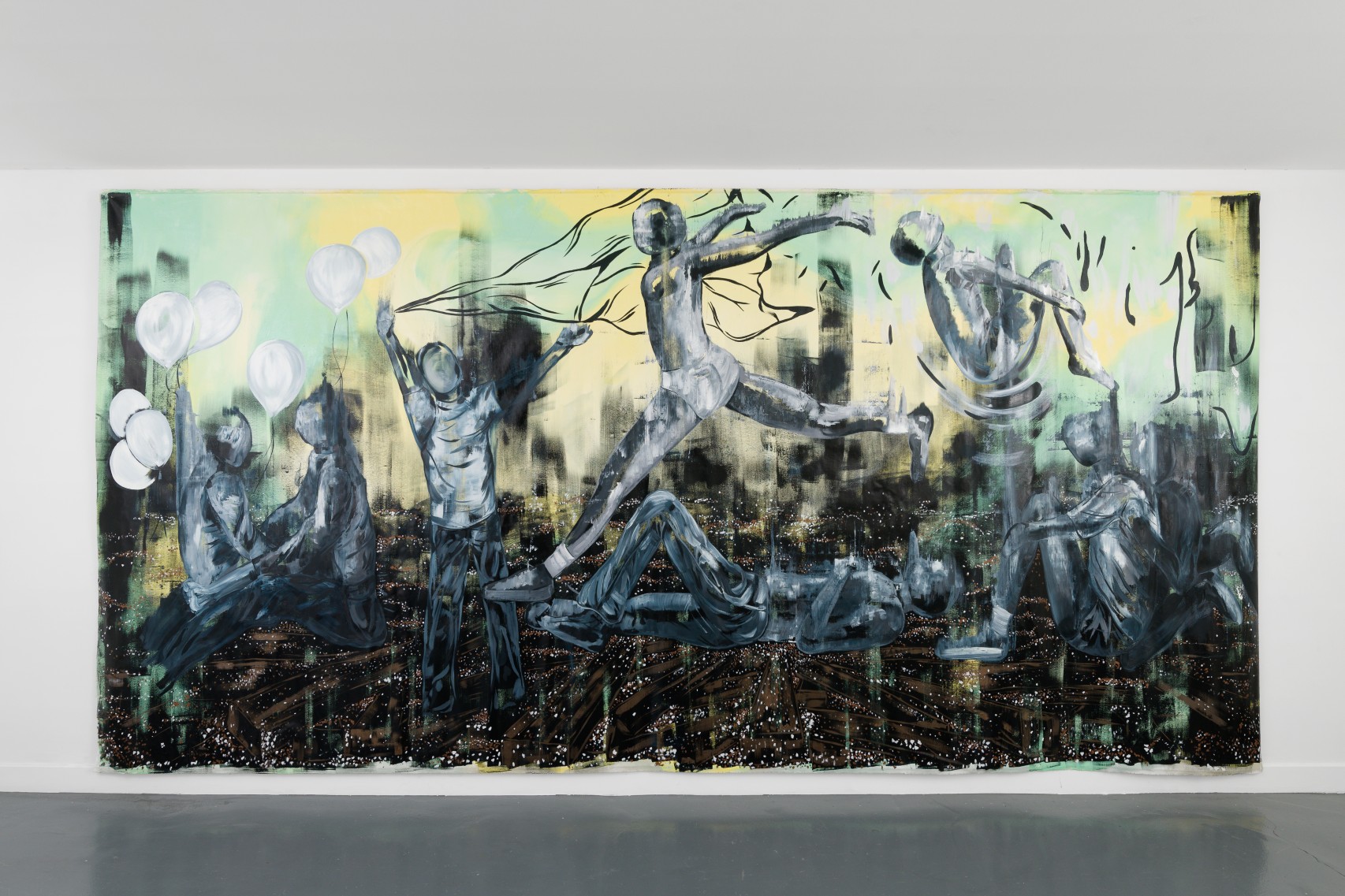
Syntax, 2024, Oil on linen, 440 x 220 cm. Courtesy the artist & spiaggia libera, Paris. Photo © Aurélien Mole
Their work has been exhibited at: Magasins Généraux, Pantin (2024); Institut du Monde Arabe, Paris (2024); Quench, Margate, UK (2024) ; MAC VAL, Paris / The Kooples Art Prize (2023); PAGE (NYC), New York (2022); SPACE Artist Award (2022); Fragment Gallery, New York (2022); Sadie Coles HQ, Londres (2022), Whitechapel Gallery (2022) South London Gallery (2020).
